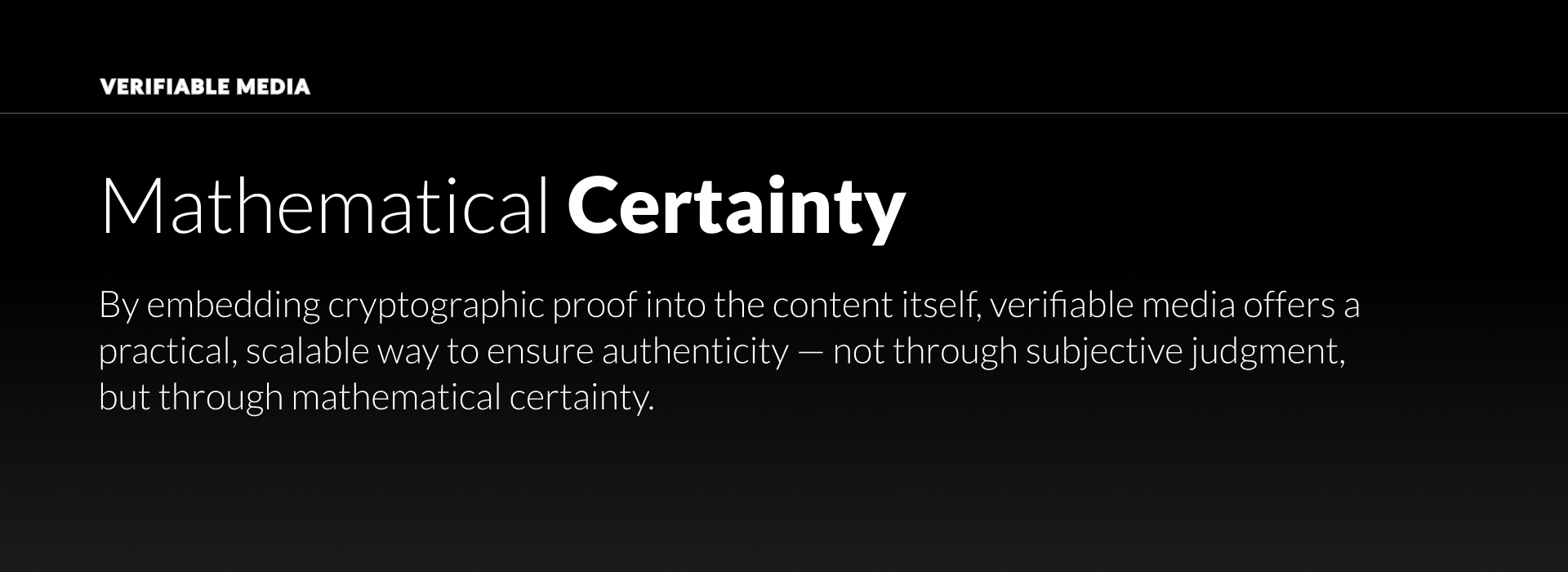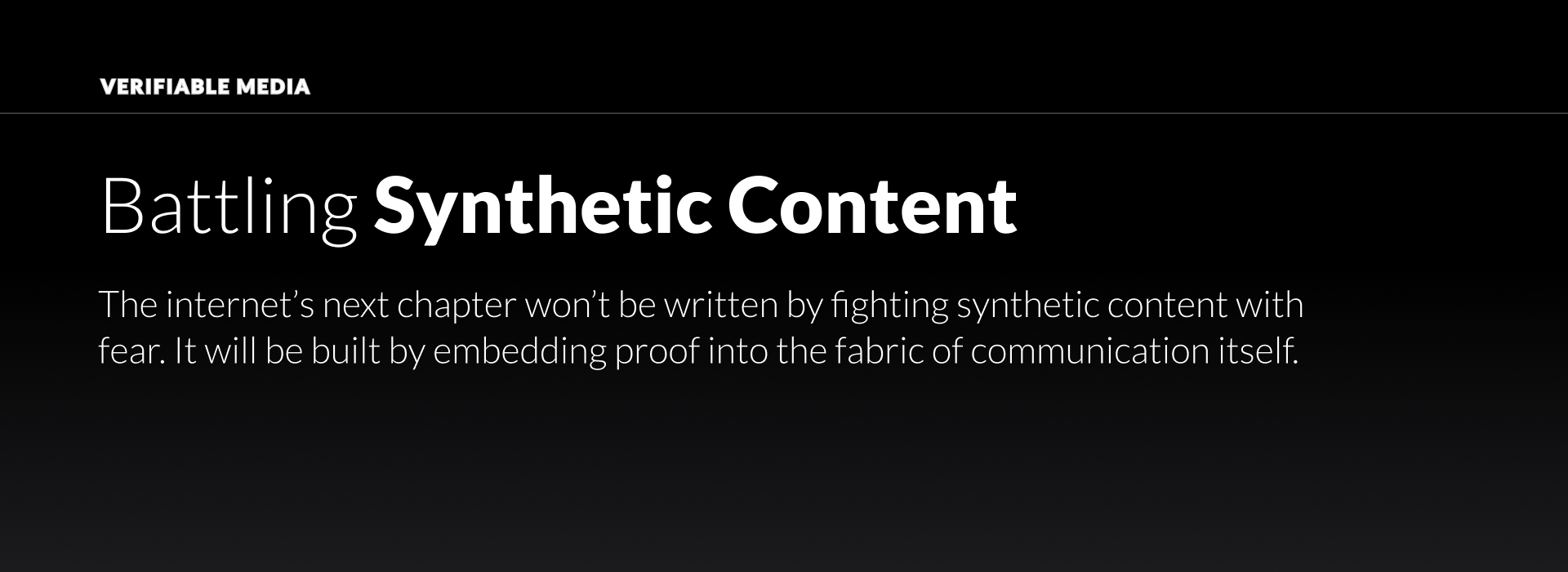Exponential Episode 18: Public Privacy
In this episode of Exponential, Aisling Connolly, Chief Strategy Officer at TACEO, joins the show to unpack the deeper technical

In an age when digital content is easily manipulated and circulated faster than ever, trust on the Internet is becoming endangered. The explosion of synthetic media — from AI-generated imagery to deepfake videos — has created a credibility gap: one where even authentic content can be met with doubt.
But the story doesn’t need to end in skepticism. Instead, it could mark the beginning of a new architecture for trust: verifiable media.
Verifiable media, in this context, is any kind of digital content (such as video, audio, images, etc.) that carries cryptographic proof of origin and edits. By carrying receipts, anyone can verify the authenticity and provenance of the content.
This new form of credentialing, according to a recent post by Adobe, is similar to nutritional information for food. Labels on food help us understand what we are consuming and the associated consequences. Maybe our media diet needs something similar.
By embedding cryptographic proof into the content itself, verifiable media offers a practical, scalable way to ensure authenticity — not through subjective judgment, but through mathematical certainty.

The speed and scale of AI-driven content creation is staggering.
According to Google search results generated by AI, 57% of all text-based Internet content is created or translated by artificial intelligence. Other AI-generated research show that number will get as high as 90% in the next year or two. Meanwhile, deepfakes and other forms of information manipulation continue to grow across the Internet at record pace.
Almost paradoxically, the rising tide of synthetic media creates a general sense of doubt that makes it harder to believe any media, whether it’s authentic or not.
While we might not be able to slow the speed and scale of synthetic content, we can make it easier to verify the source of our information.
Cryptographically-backed verifiable media provides a durable anchor point, allowing users, platforms, and institutions to distinguish genuine content from manipulated material with confidence and transparency.
At the heart of this movement is a new set of cryptographic tools designed for the realities of the AI era.
One example of this comes from the Coalition for Content Provenance and Authenticity (C2PA) — a collaboration between Adobe, Microsoft, Intel, and others — to develop open standards for embedding Content Credentials into digital files.
These credentials are tamper-evident, cryptographically signed records that contain details about where a piece of media came from, how it was edited, and whether AI tools were involved. The credentials travel with the content itself, offering an unbroken chain of handling from creation to publication.
Notably, the adoption curve for verifiable media is accelerating:

Here’s the thing. We aren’t just talking about verifying Internet content. The need for verifiable media also plays a role in critical sectors like defense and governance.
Information manipulation is now a frontline risk, capable of influencing state-level outcomes or sowing doubt in civil institutions. Recognizing this, the Department of Defense (DoD) has already begun embedding content credentials into official multimedia assets distributed through its communication channels. In its 2025 cyber strategy update, the DoD emphasized that trustworthy digital provenance is critical infrastructure, foundational to resilience against emerging threats.
Authentication systems — cryptographic, interoperable, verifiable — are becoming crucial elements to sound security practices.
At Nexus, the growing demand to build more robust verifiable media systems aligns perfectly with our mission to build the Verifiable Internet at scale.
Our goal is to shape infrastructure that will make cryptographic trust an everyday reality.
Where others see an arms race of deception and detection, we see an opportunity to reshape the fundamentals of digital communication with verifiability at its core.
This article is part of our ongoing exploration of trust and verification in the digital age.
For more, read:
Verifiable Everything: Age of Blur
Verifiable AI: Proof over Promise
In the next couple of weeks we will also cover verifiable identity and the Verifiable Internet.
Together, these pieces chart the emerging architecture where cryptography, open standards, and verifiable provenance merge and redefine the information we consume.